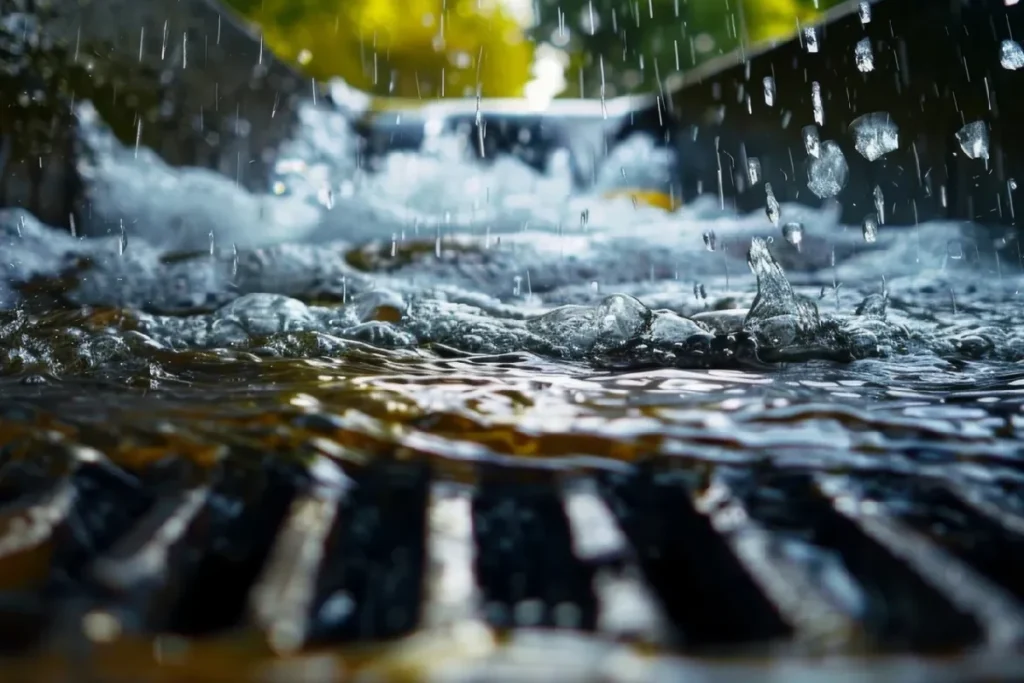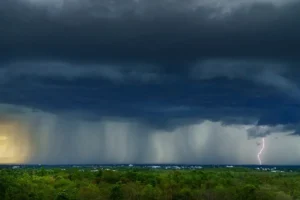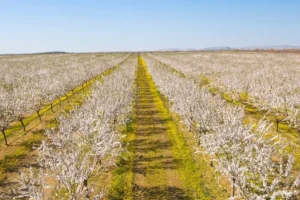As cities expand and urban populations swell, the need for effective stormwater management becomes ever more pressing. Urban stormwater management is the process of controlling and using rainwater runoff in urban environments to minimize flooding, reduce pollution, and enhance water quality.
Introduction
What is Urban Stormwater Management?
Urban stormwater management refers to the strategies and systems implemented to handle the rainwater runoff that occurs in cities. Unlike natural landscapes where water can percolate into the soil, urban areas with impervious surfaces like roads, sidewalks, and buildings prevent water infiltration, leading to increased runoff. Managing this runoff is crucial to prevent flooding, erosion, and pollution of water bodies.
Why is it Important?
The significance of urban stormwater management cannot be overstated. With climate change causing more frequent and intense storms, cities are increasingly vulnerable to flooding. Poorly managed stormwater can overwhelm drainage systems, contaminate water supplies, and cause severe damage to infrastructure. Effective management is essential to safeguard public health, protect the environment, and ensure the sustainability of urban areas.
Challenges of Stormwater Management in Urban Areas
Increased Runoff
Urbanization leads to the creation of impervious surfaces which significantly increase runoff volumes. Natural landscapes absorb rainfall, but cities direct this water into storm drains, causing rapid accumulation and potential flooding.
Pollution
Runoff from urban areas often contains pollutants like oil, heavy metals, pesticides, and litter. These contaminants can degrade water quality, harm aquatic life, and pose risks to human health when they enter rivers, lakes, and coastal waters.
Aging Infrastructure
Many cities have outdated stormwater infrastructure that is ill-equipped to handle current demands. Aging pipes and inadequate drainage systems can exacerbate flooding and increase maintenance costs.
Climate Change
Climate change intensifies the unpredictability of weather patterns, leading to more severe and frequent storms. Cities must adapt to these changing conditions to prevent stormwater from overwhelming their systems.
Key Strategies in Urban Stormwater Management
Green Infrastructure
Green infrastructure involves using natural systems to manage stormwater. Examples include green roofs, permeable pavements, rain gardens, and urban forests. These solutions mimic natural processes, allowing water to infiltrate the ground, reduce runoff, and improve water quality. Green roofs incorporate vegetative layers installed on rooftops that can absorb rainfall, which reduces runoff and provides insulation. Permeable pavements are porous surfaces that allow water to seep through, which also reduces runoff. Additionally, rain gardens use depressions planted with native vegetation that capture and absorb runoff. Lastly, urban forests are trees and vegetation that intercept rainfall and promote infiltration.
Gray Infrastructure
Gray infrastructure refers to traditional engineered systems like storm drains, pipes, and retention basins. While essential, these systems can be costly and less adaptable to changing conditions. Retention basins and storm drains are examples of gray infrastructure. Retention basins temporarily hold runoff, allowing sedimentation and pollutant removal, whereas storm drains are pipes that move stormwater to a treatment facility or water body. Modern approaches often integrate gray and green infrastructure for optimal performance.
Low Impact Development (LID)
LID focuses on minimizing the environmental impact of development. It promotes sustainable land-use planning and the integration of natural features to manage stormwater at its source. This option can come in a few different forms, including bioretention cells and swales. Bioretention cells are landscaped areas designed to collect and filter runoff through soil and vegetation, and swales are shallow, vegetated channels that slow down runoff and promote infiltration.
Public Awareness and Education
Additionally, educating the public about stormwater management is crucial for community support and participation. Campaigns can inform residents about the impact of their actions on stormwater quality and encourage practices like proper disposal of waste and the use of rain barrels.
Parjana Engineering: A Groundbreaking Solution for Urban Stormwater Management
Innovative companies like Parjana Engineering are paving the way with unique and effective solutions for urban stormwater management that overcomes the obstacle of impermeable surfaces in cities.
The Product
Parjana Engineering’s system is a revolutionary method that enhances the natural infiltration and distribution of water into the ground. Unlike traditional stormwater management systems that rely heavily on infrastructure to redirect runoff, it uses passive technology to increase the ground’s ability to absorb and manage water efficiently in the cityscape.
Key Features
The system sports a passive design, which means it operates without the need for external energy sources, making it sustainable and cost-effective. Also, it reduces surface runoff and mitigates flood risks.
How it Works
The system involves the installation of specially designed vertical devices into the ground. These devices create pathways that facilitate the movement of water from the surface into deeper soil layers. The process mimics and enhances the natural groundwater recharge cycle, allowing urban areas to manage stormwater more effectively.
Parjana Engineering’s Urban Infiltration System
What is it?
Installed as a standalone system, Parjana Engineering’s product is a low-impact stormwater infiltration and groundwater recharge enhancement technology. The company offers integrated system approaches – under the Parjana Urban Infiltration System (PUIS) – that allow this infiltration and recharge functionality to be combined with other technologies that offer:
•Stormwater detention
•Rainwater harvesting
•Increased exfiltration
•Bioretention
•Physical, chemical, or bio- filtration
•Pre-treatment
•Habitat remediation
•… and more!
How does the PUIS work?
The PUIS is a scalable, customizable, and cost-effective solution ideal for implementations in municipal stormwater management (e.g., volume reduction or mitigating treatment costs and overflow); rain gardens; irrigation districts; best management practices, and more.
Parjana Engineering works with a number of partners to engineer custom integrated system approaches based on our clients’ unique needs, with any combination of available technologies. Parjana Engineering’s system and/or any of our partners’ offerings can also be installed with pre-existing stormwater management solutions, as a supplement.
Benefits of Parjana Engineering’s System
The system reduces flooding, improves water quality, enhances urban green spaces, and is cost-effective and sustainable.
The product prevents flooding by increasing the soil’s infiltration capacity. This helps mitigate the risk of urban flooding, protecting infrastructure and properties. Also, by promoting natural infiltration, the system filters stormwater through soil layers, removing pollutants and improving the quality of water entering groundwater reserves and nearby water bodies. Additionally, the improved soil health supports the growth of vegetation, which can enhance urban green spaces, contributing to the aesthetic appeal and environmental health of cities. Finally, the passive nature of the system eliminates the need for complex infrastructure and ongoing energy inputs. This makes it a cost-effective solution for cities looking to manage stormwater sustainably.
A Case Study of One of Parjana Engineering’s Success Stories
Lawrence Technological University (LTU)
In 2017 Parjana Engineering achieved remarkable success with their stormwater management installation at Lawrence Technological University (LTU) in Southfield, Michigan by using the National Demonstration of Scalable Integrated Drainage System to Mitigate Parking Lot Stormwater Runoff, which involves retrofitting parking lot storm collection drains to mitigate at least a 1-inch rain event in 24 hours. Lawrence Technological University (LTU) is leading a collaboration of industry partners in a multi-state demonstration project featuring the implementation of an innovative and scalable integrated drainage design that significantly mitigates polluted parking lot stormwater runoff. The integrated drainage system includes three separate patented technologies combined in a novel approach including a porous pavement surface (parking performance maintained), an underground engineered soil storage reservoir (for stormwater storage and water quality filtration) and Parjana Engineering’s infiltration system (to improve infiltration and reduce runoff). Through constant monitoring, this installation found that the groundwater levels increased more quickly after rain events and stabilized more quickly. This means that rainwater was effectively captured and infiltrated into the ground rather than becoming runoff, thereby reducing the spread of pollutants to surrounding surface water or into the sewage treatment facilities.
Conclusion
Parjana Engineering’s system represents a transformative approach to urban stormwater management. By harnessing the natural processes of infiltration and groundwater recharge, it offers a sustainable, cost-effective, and resilient solution for cities grappling with the challenges of stormwater management. As urban areas continue to seek innovative ways to manage water resources, Parjana Engineering stands out as a leader in promoting environmental stewardship and urban resilience.




